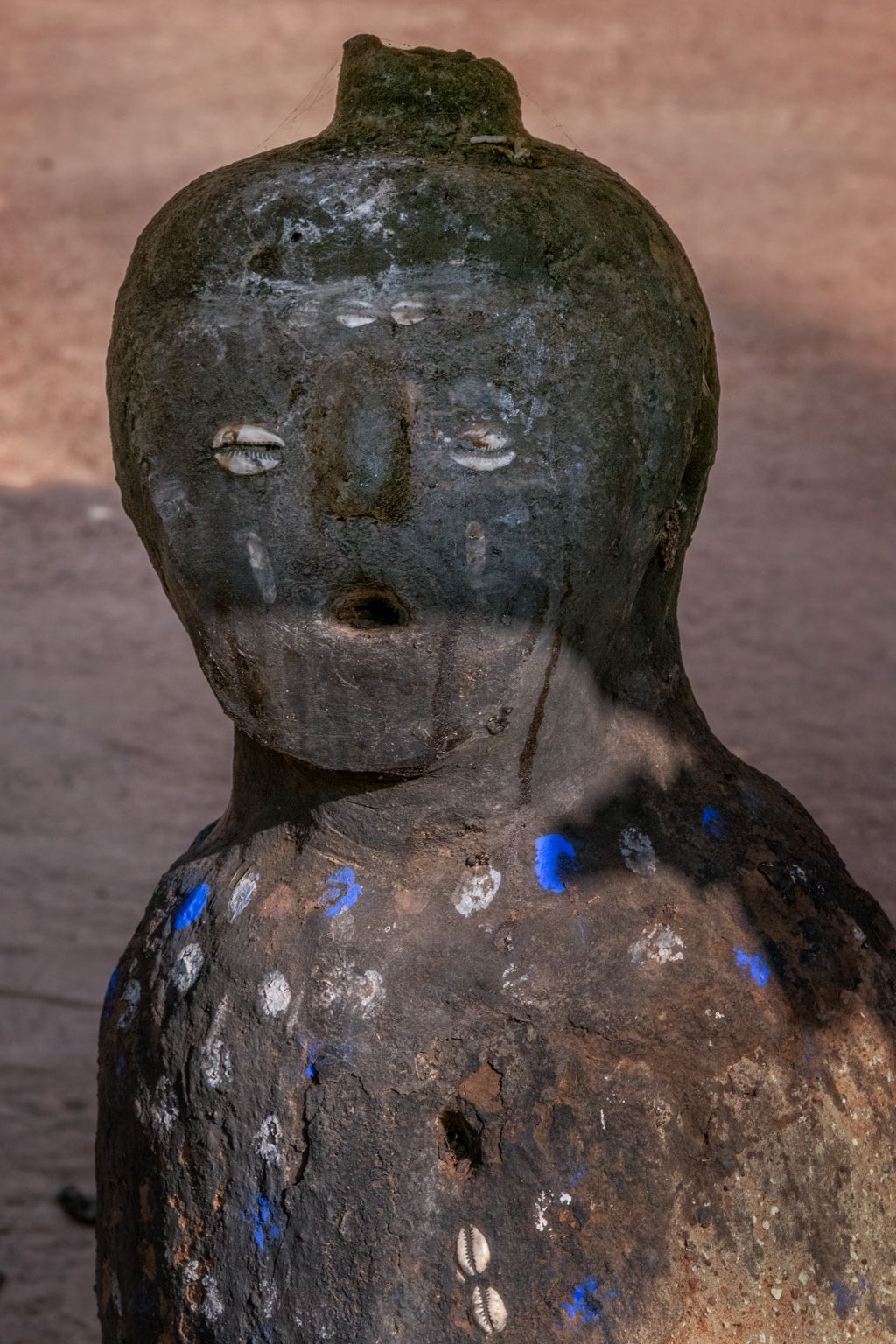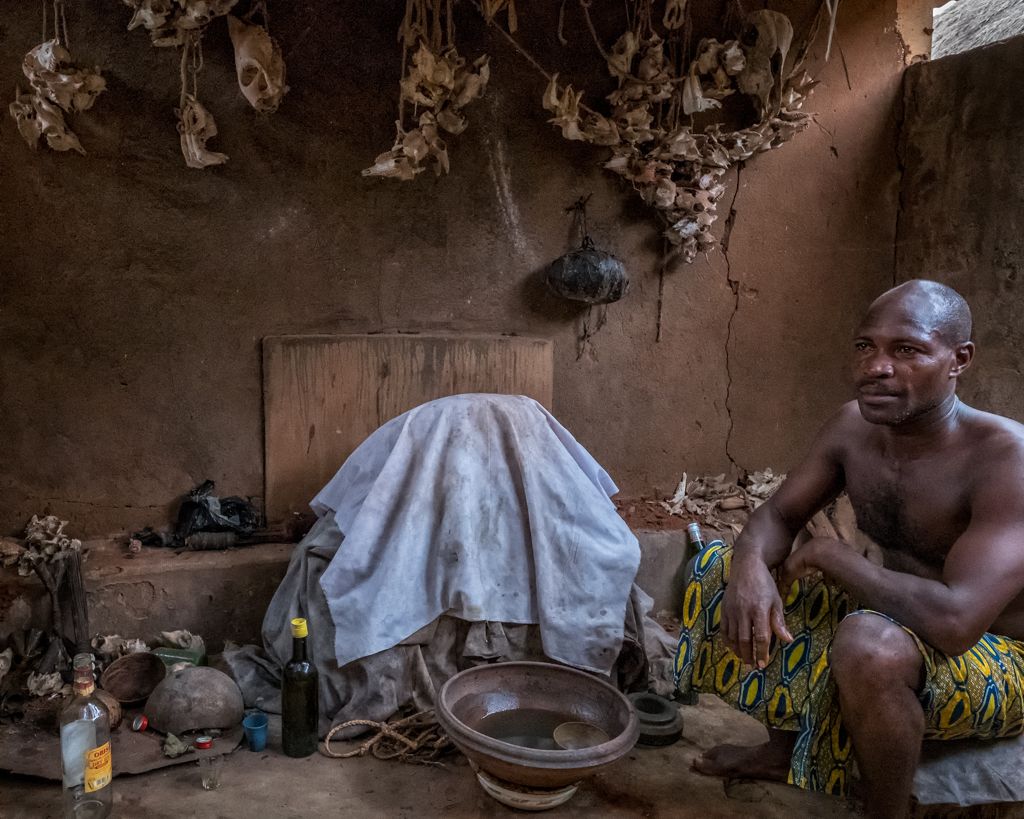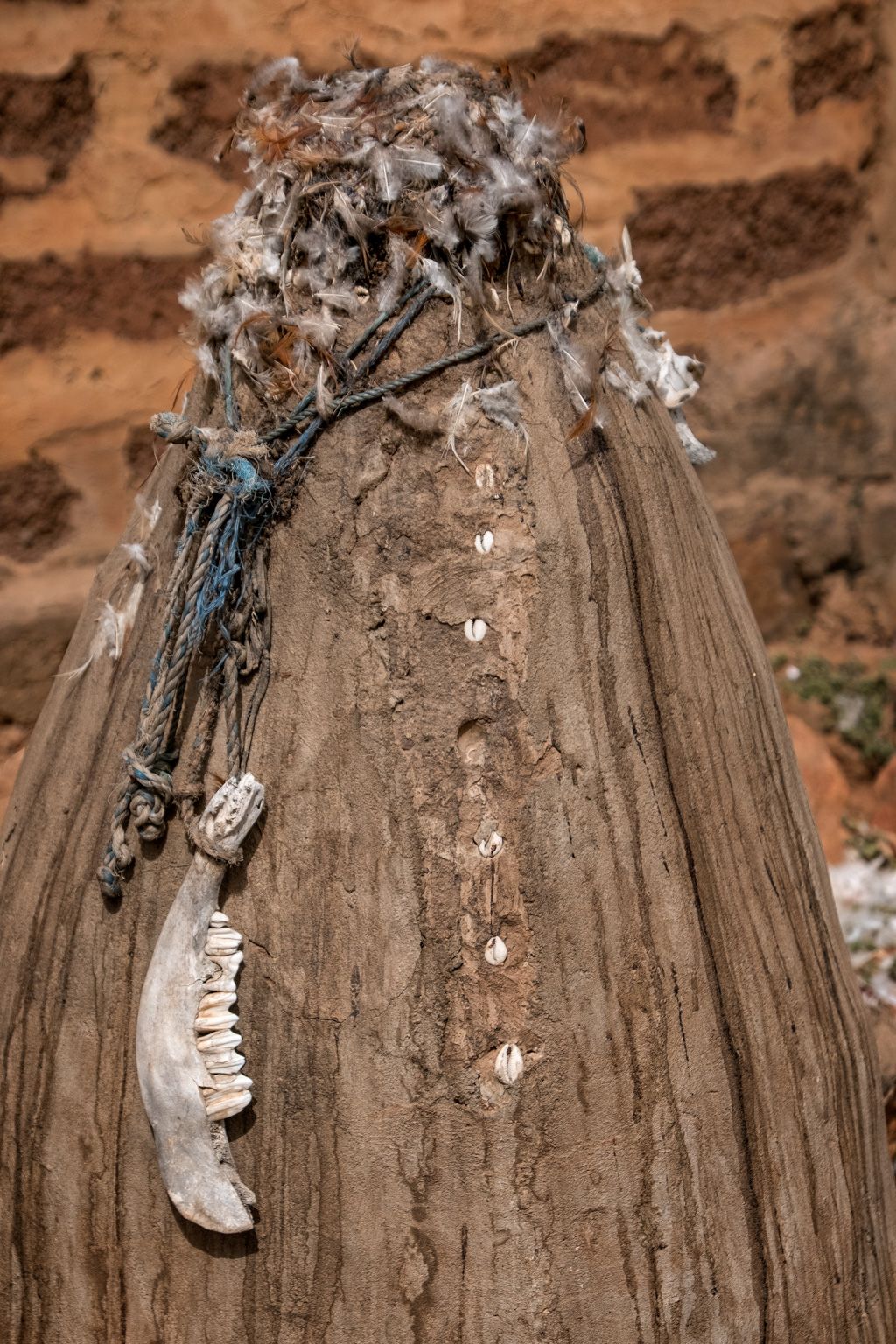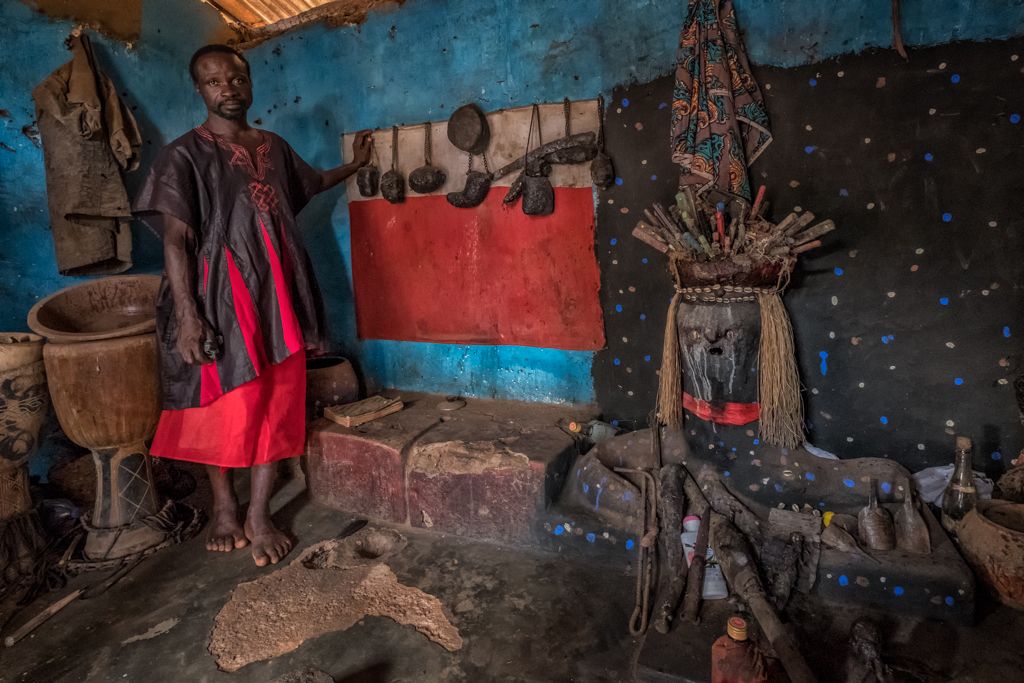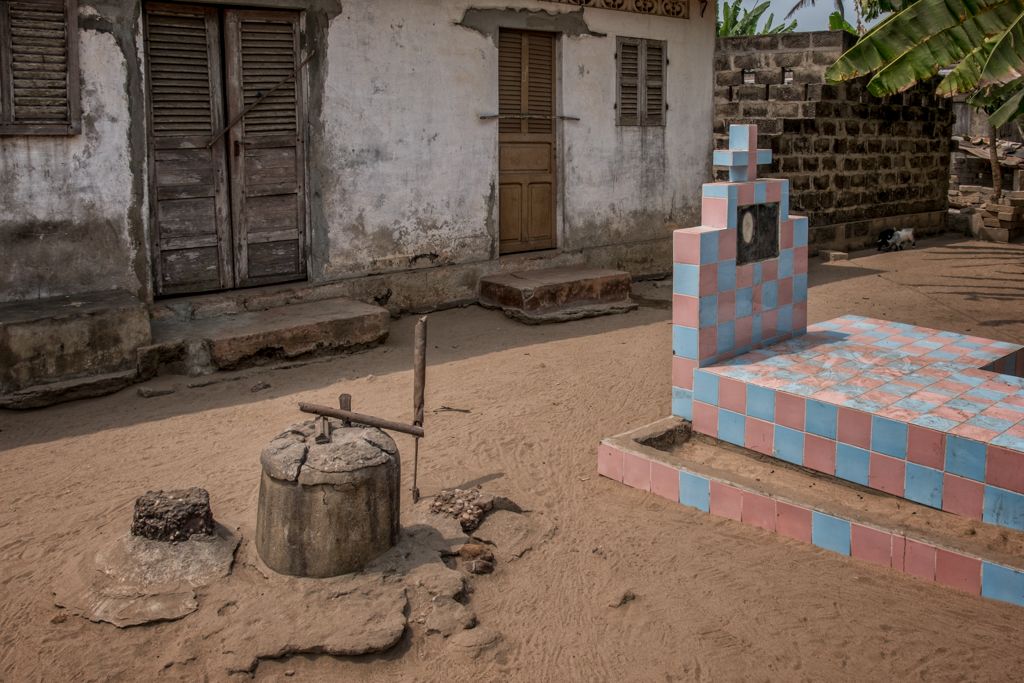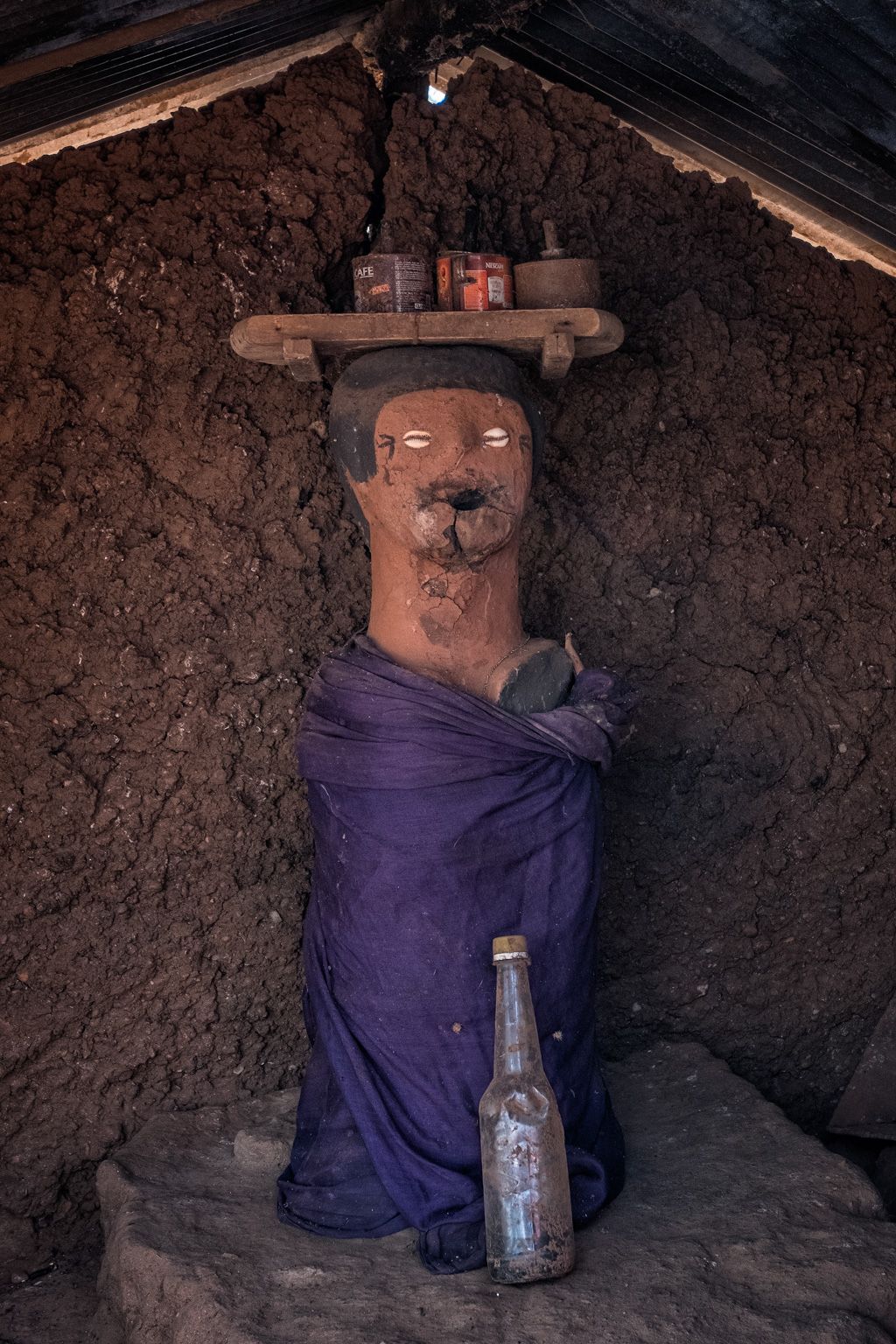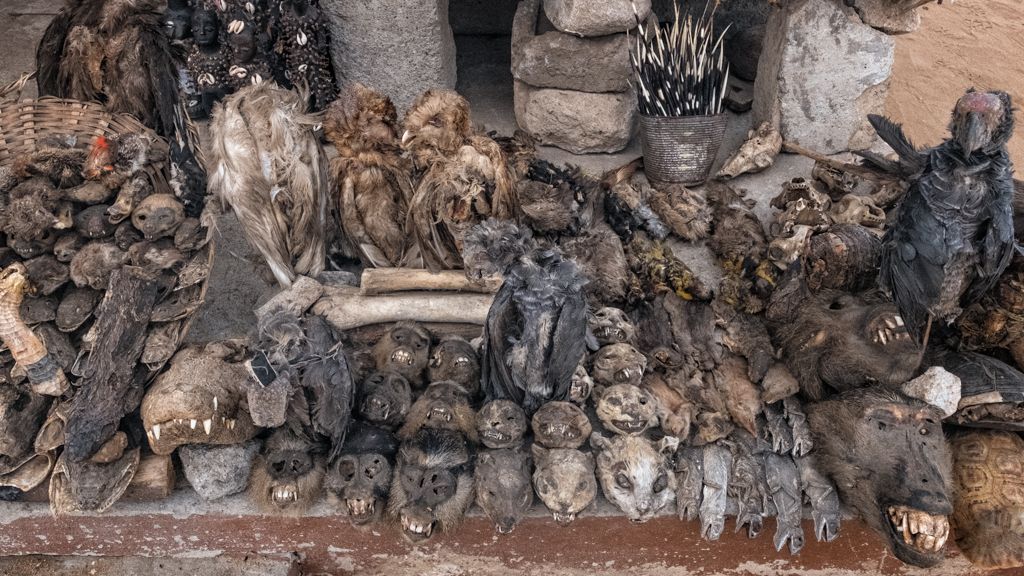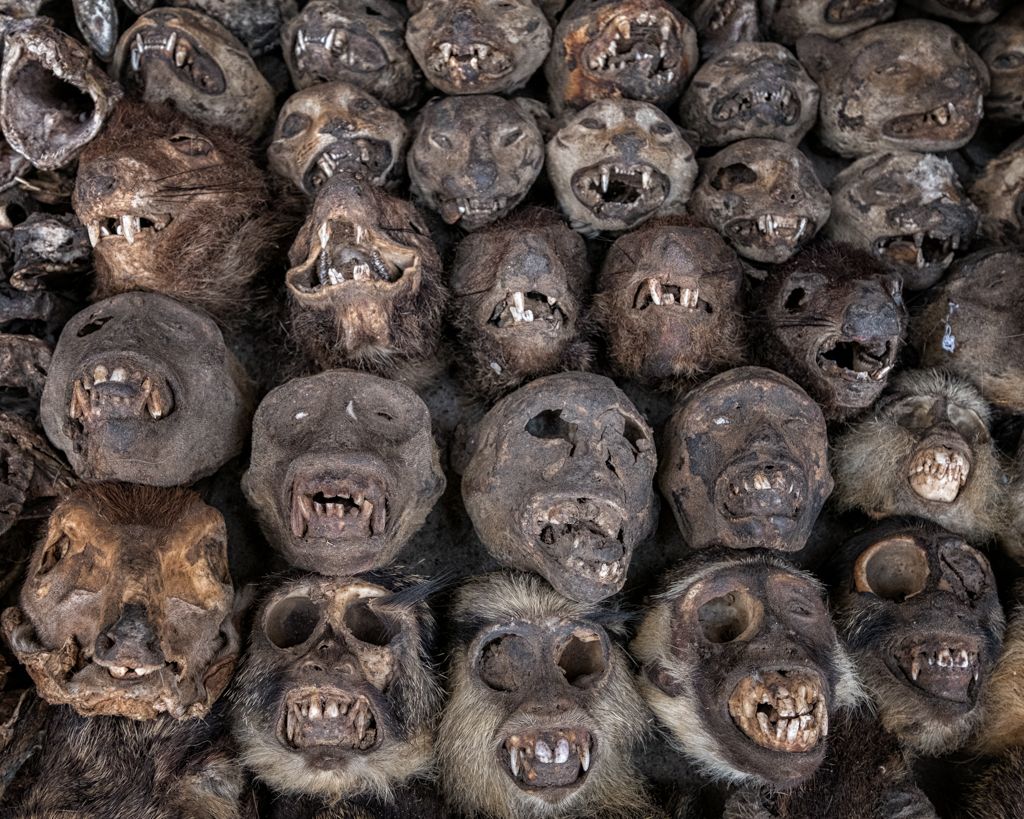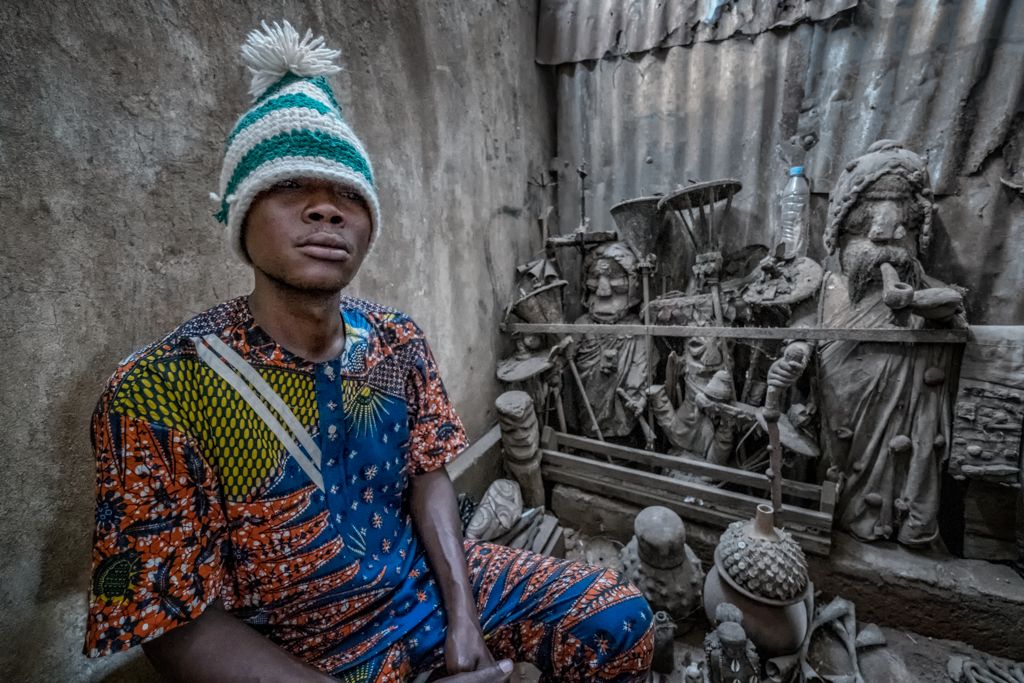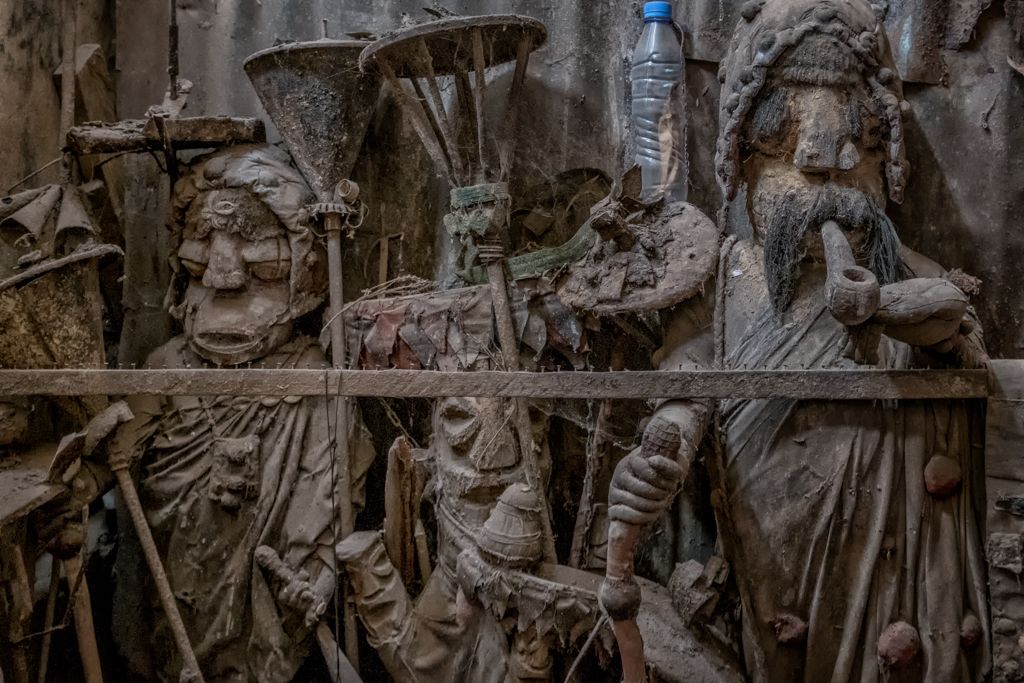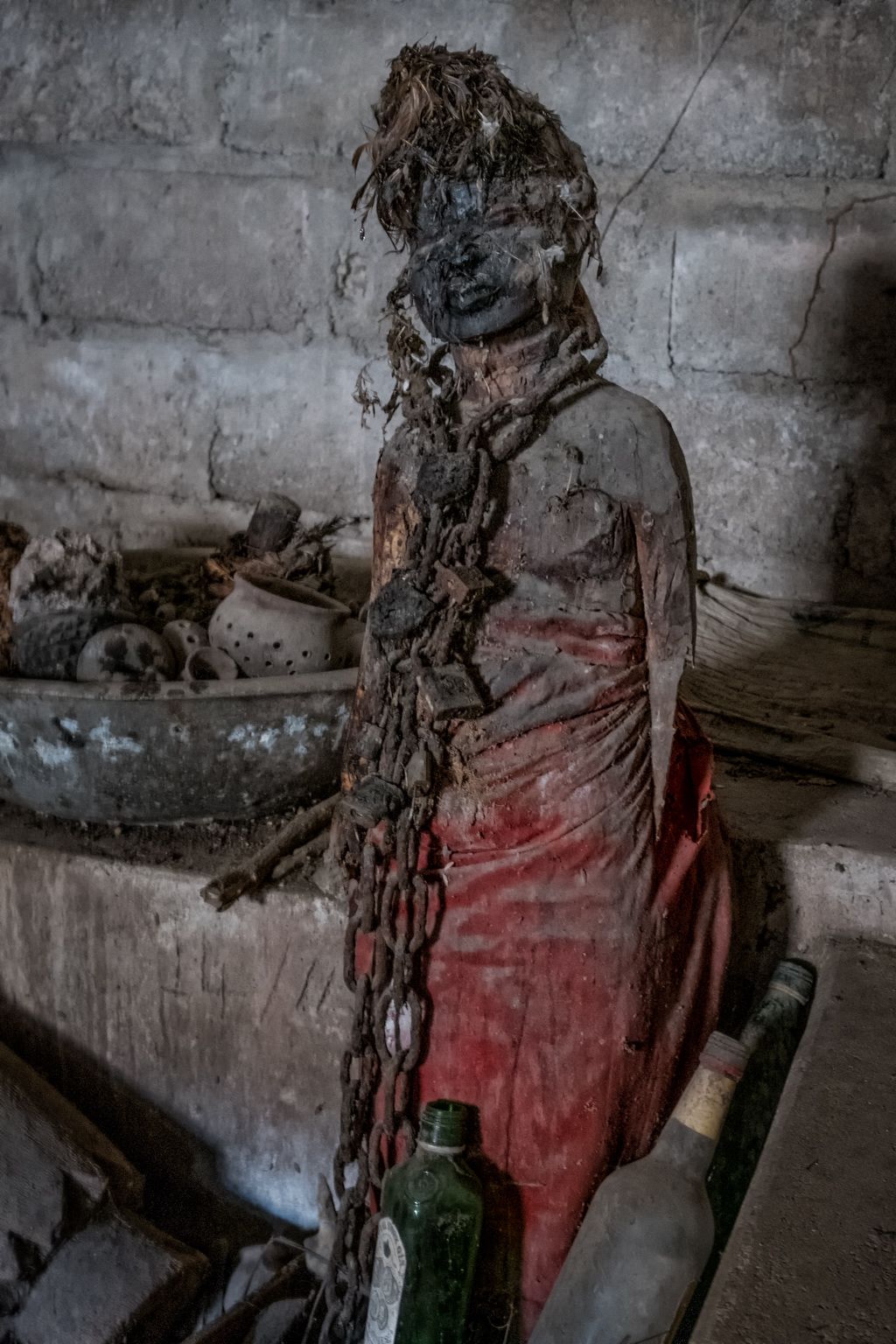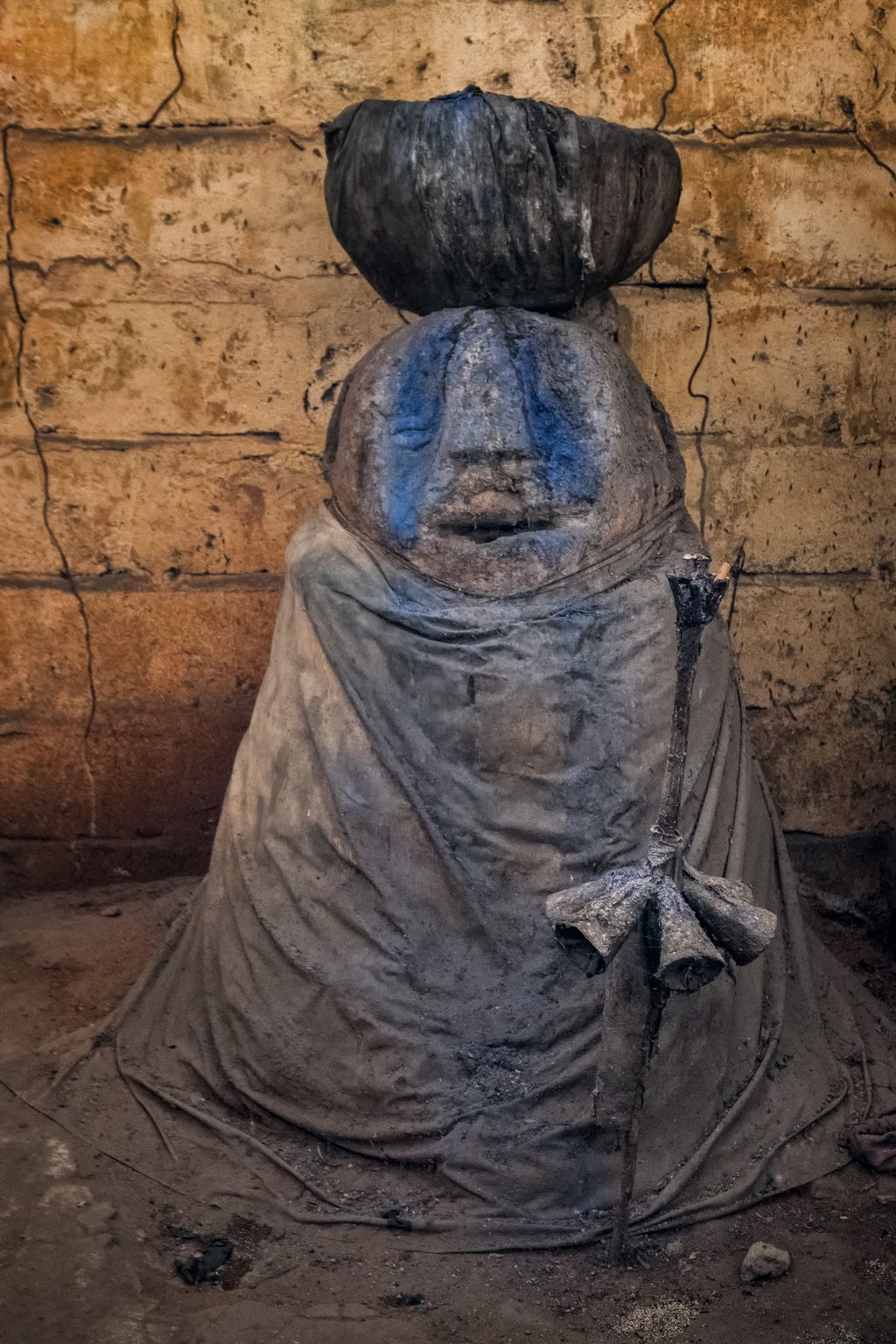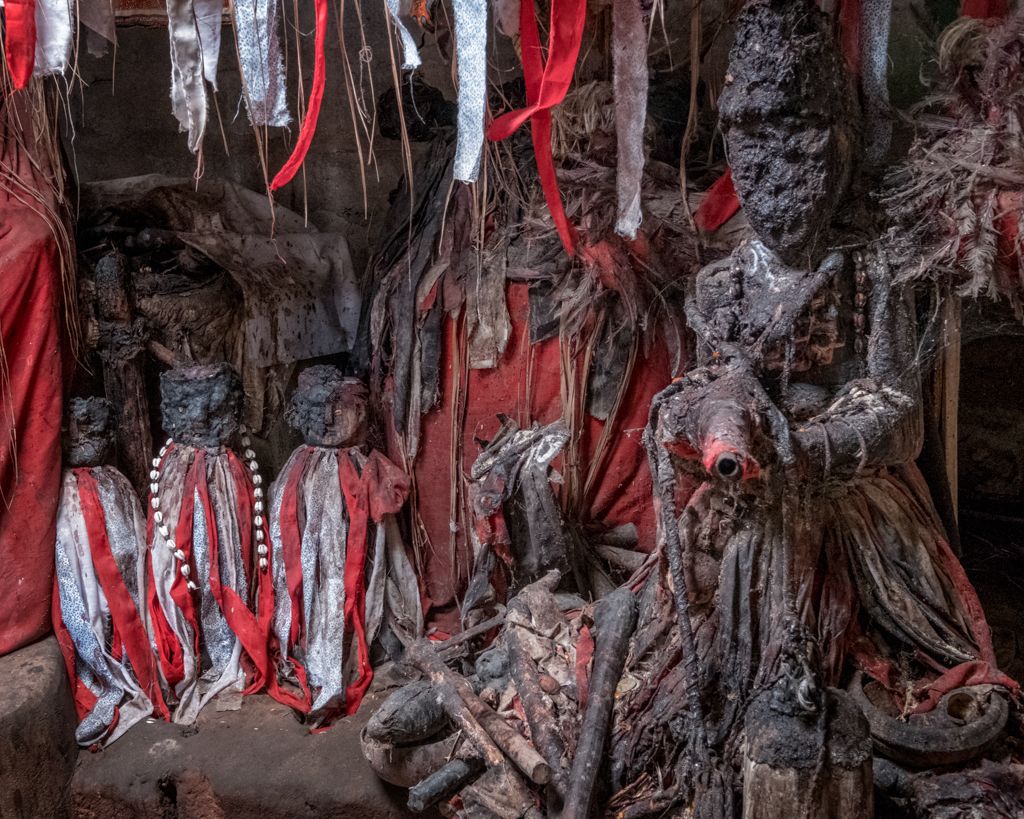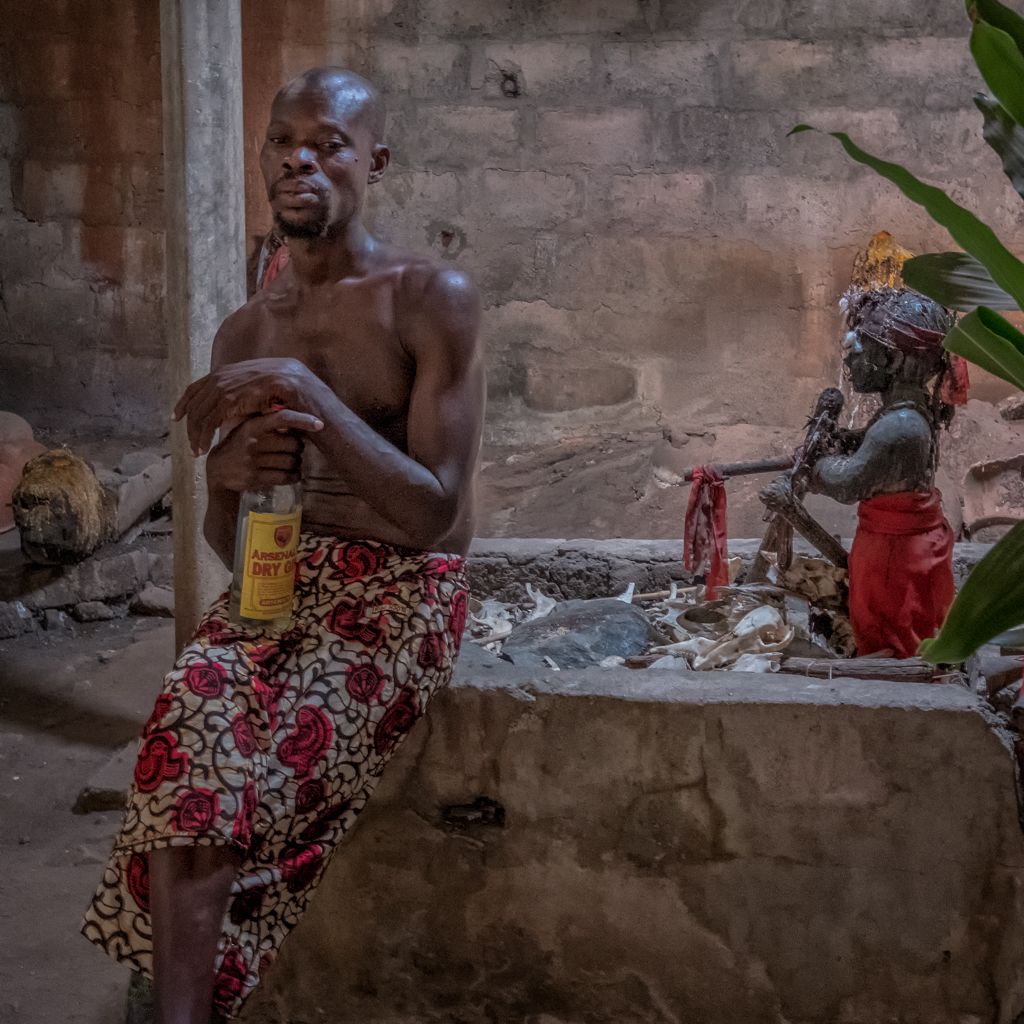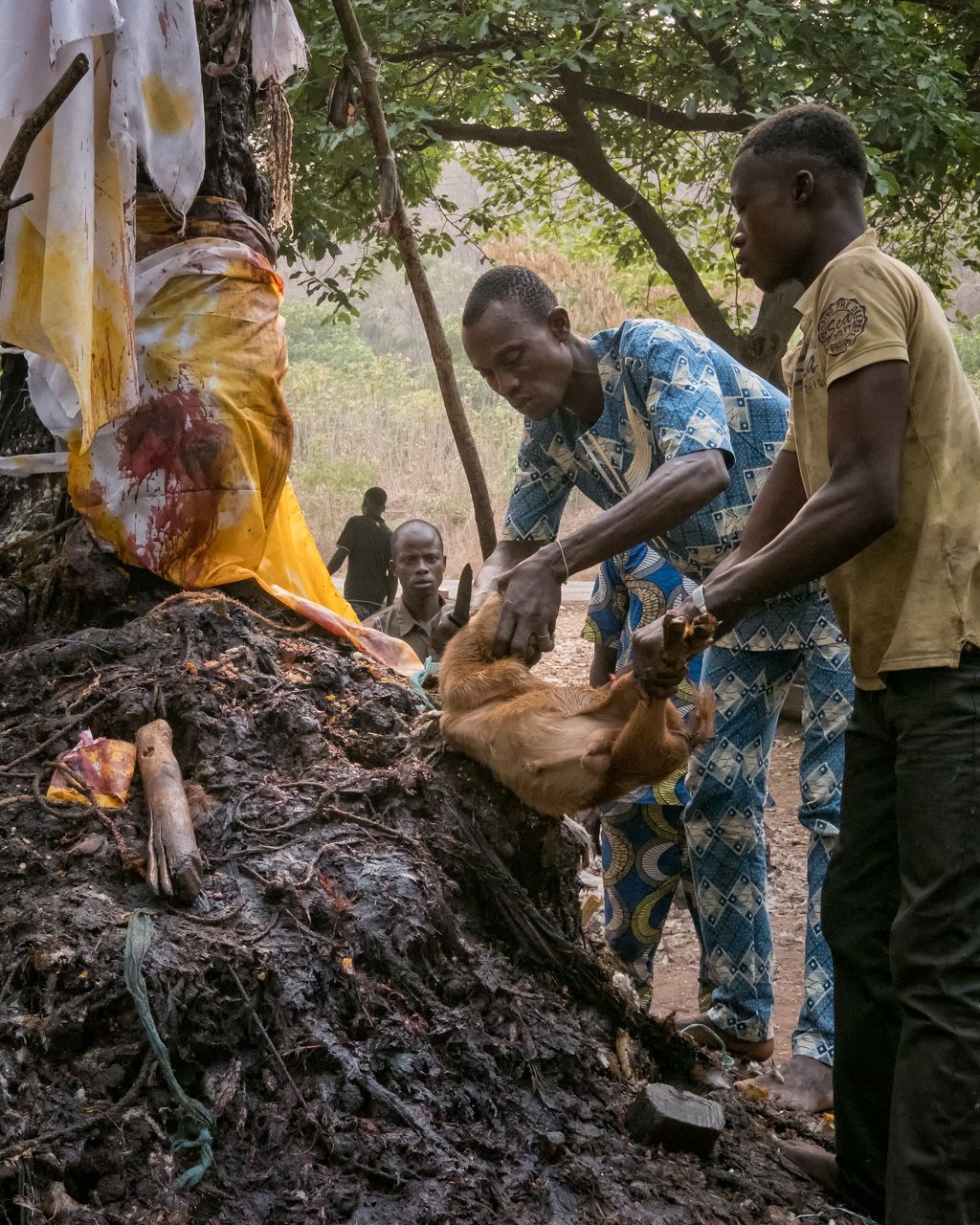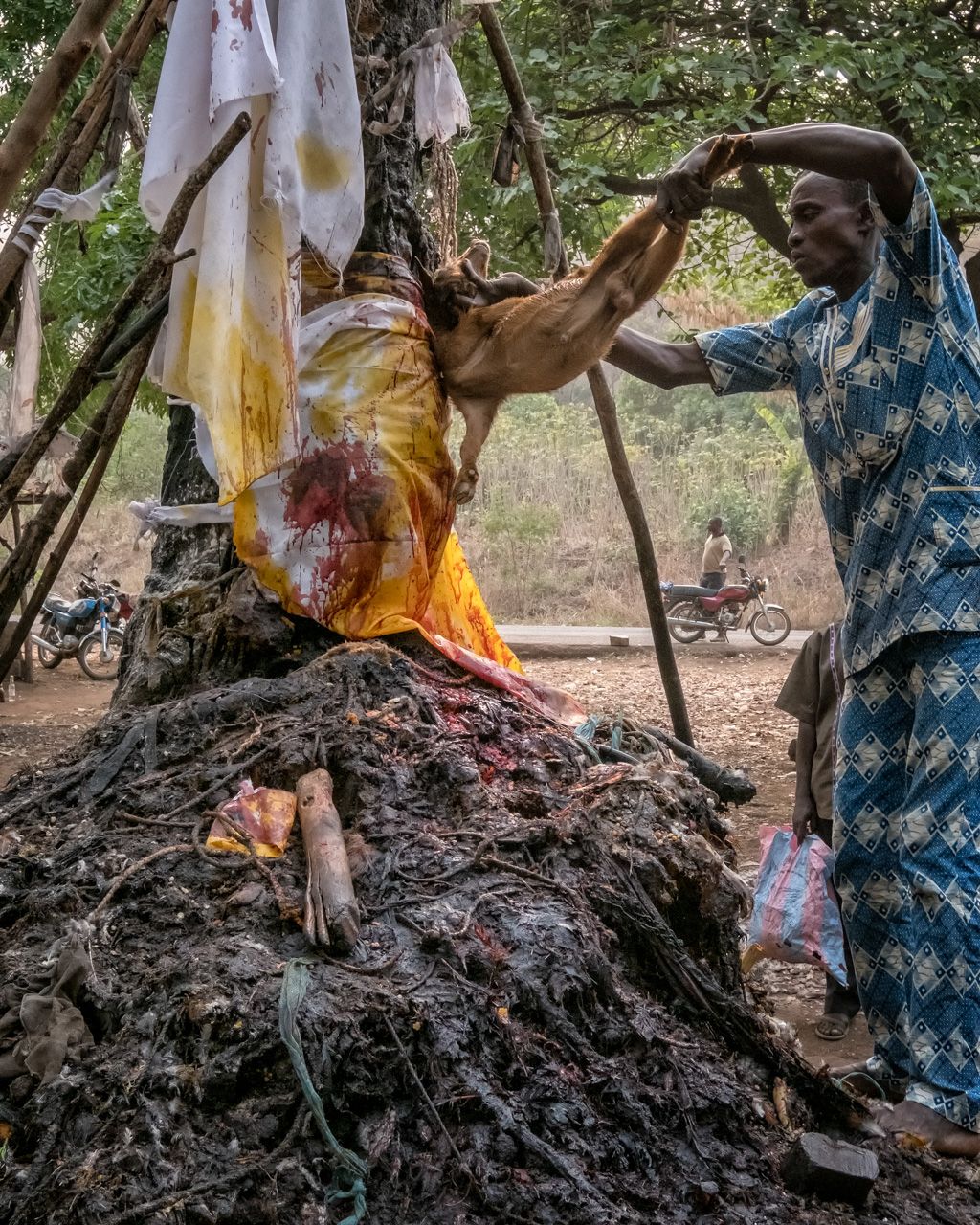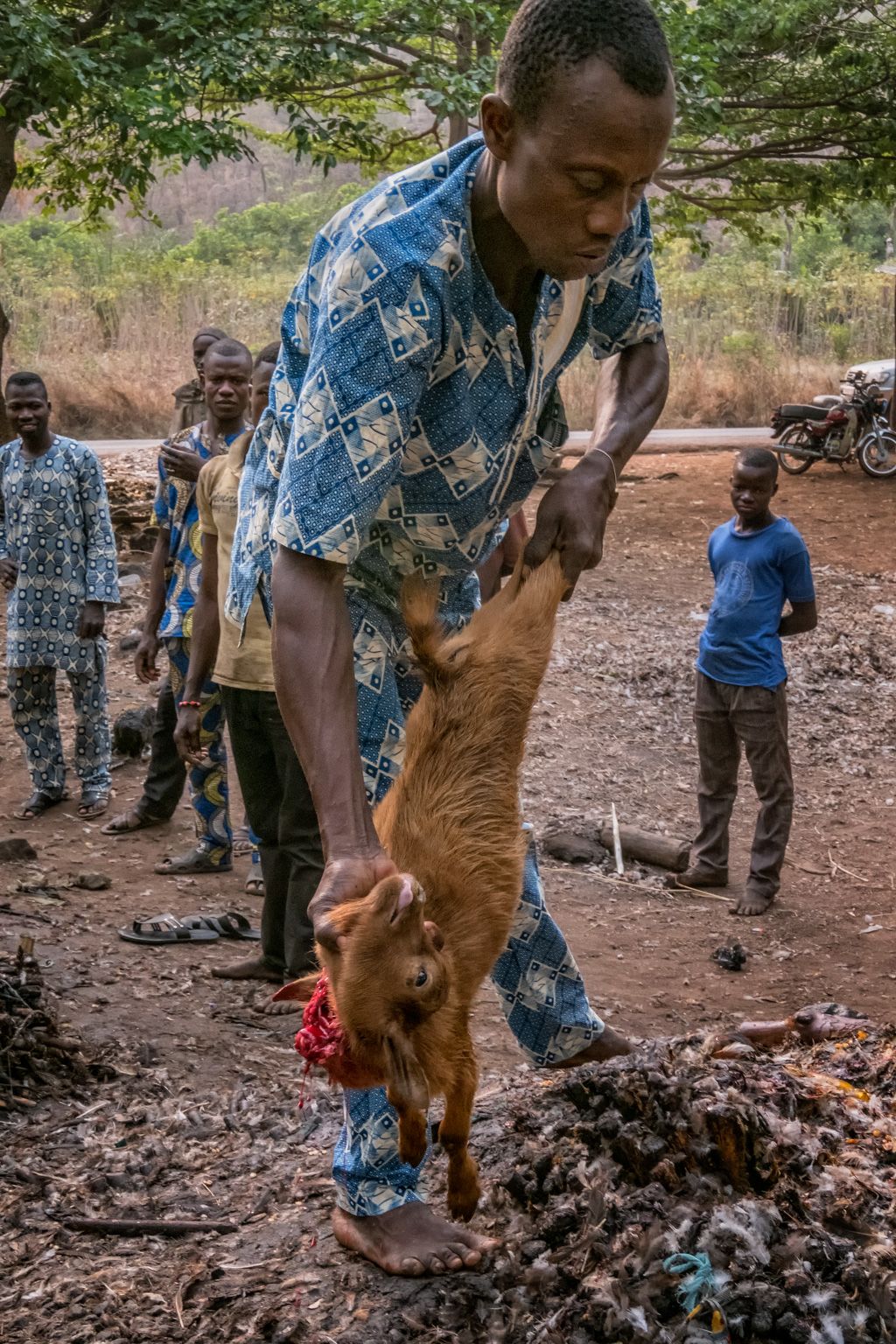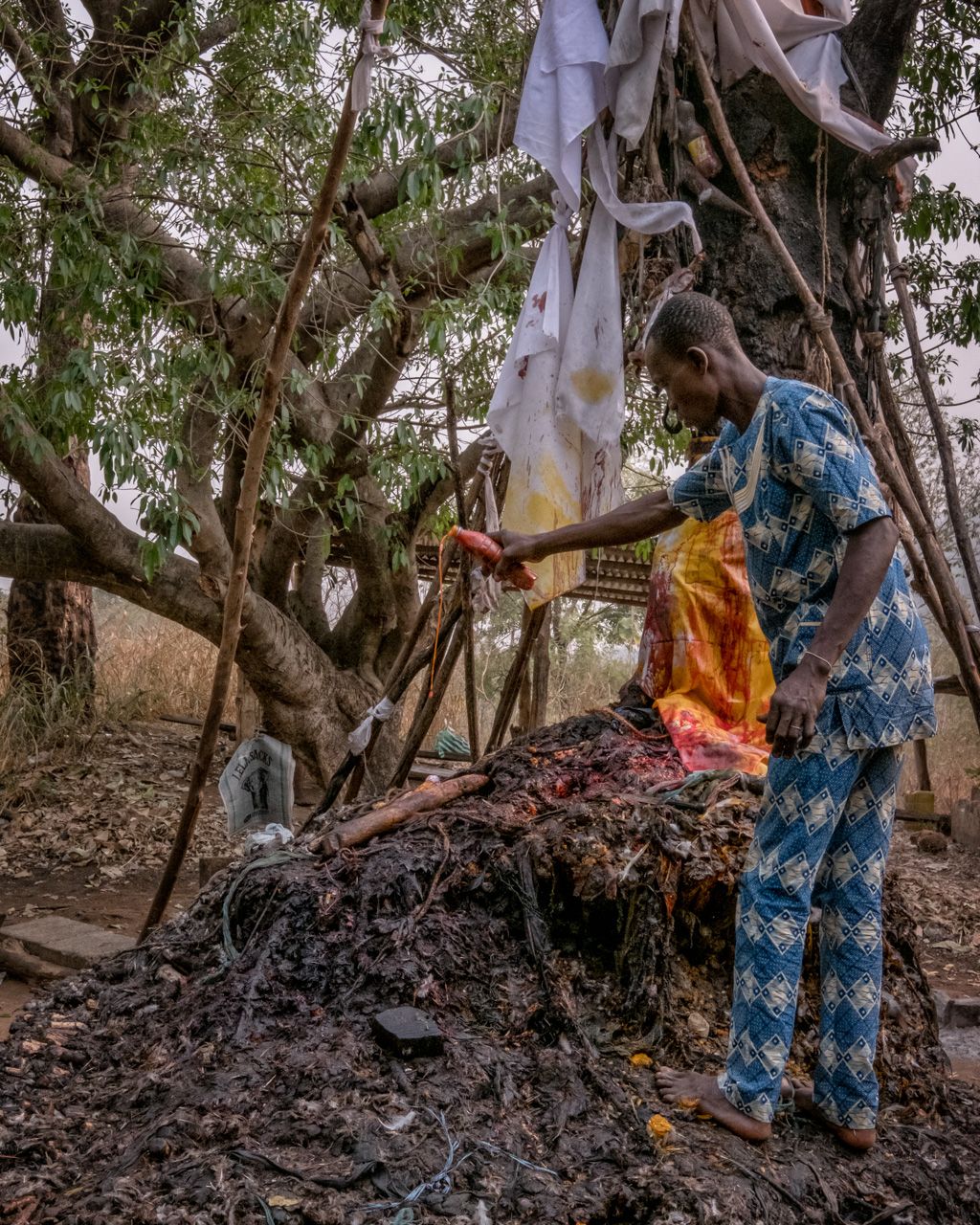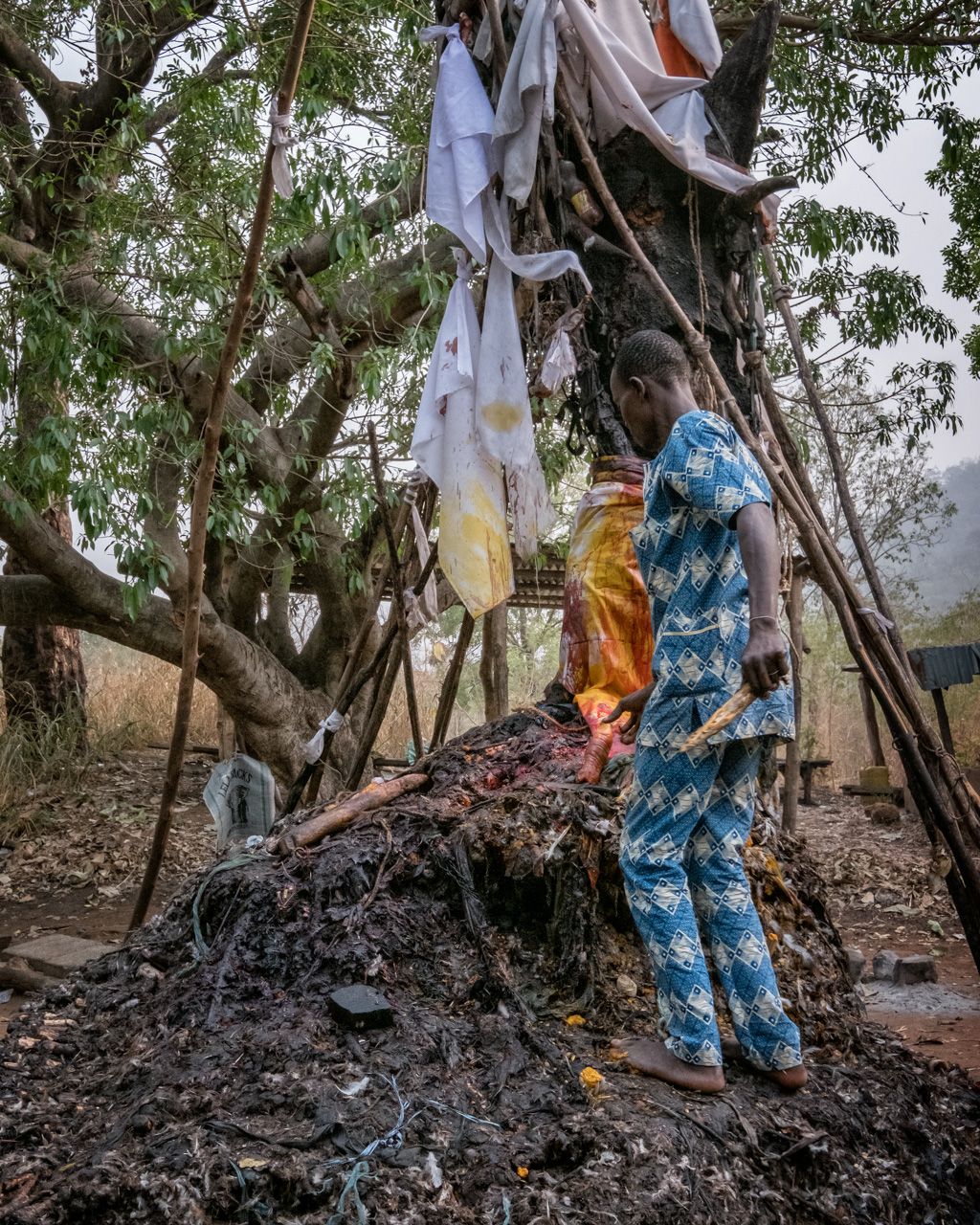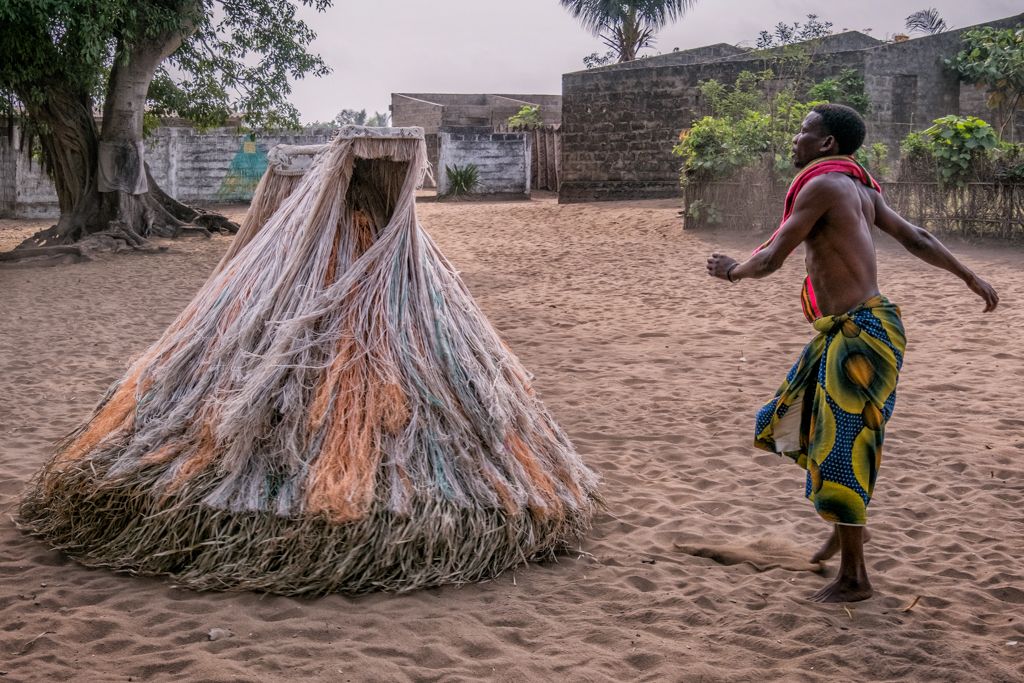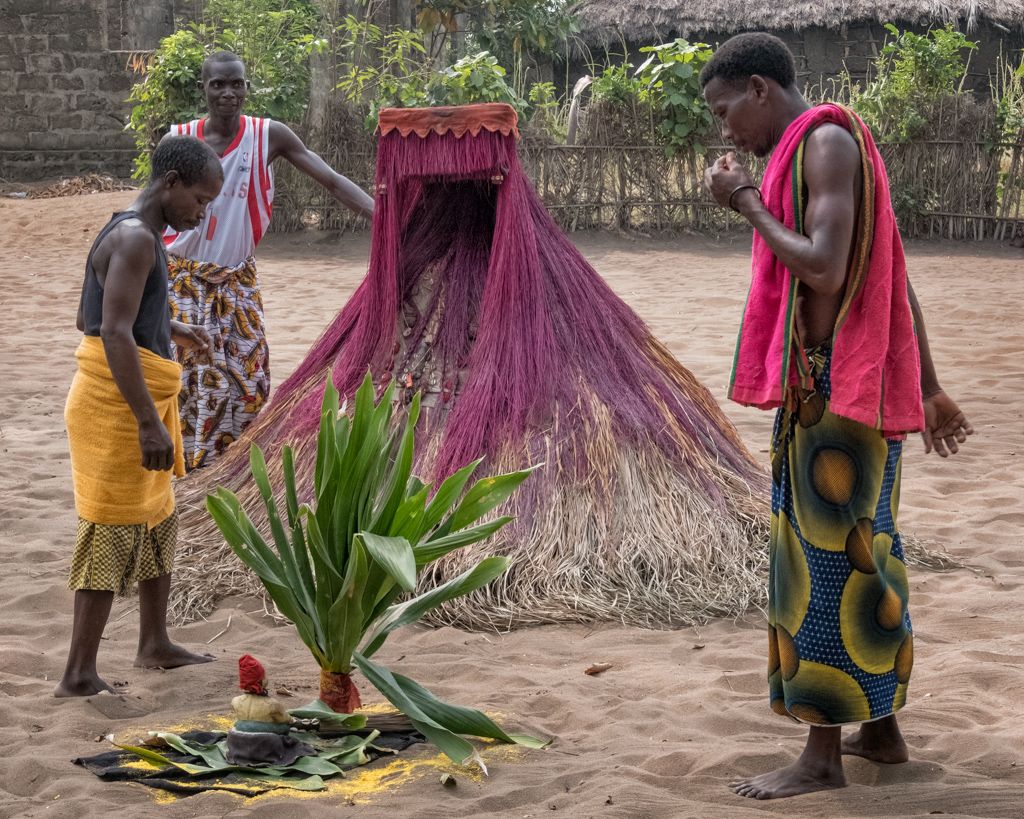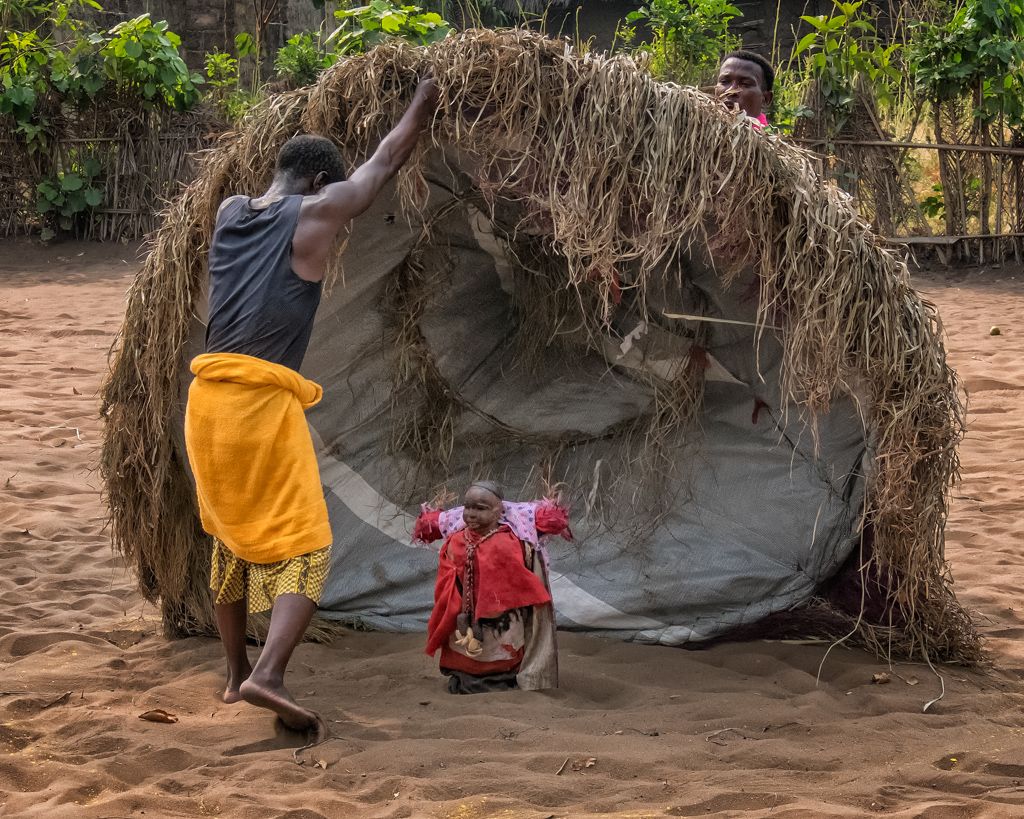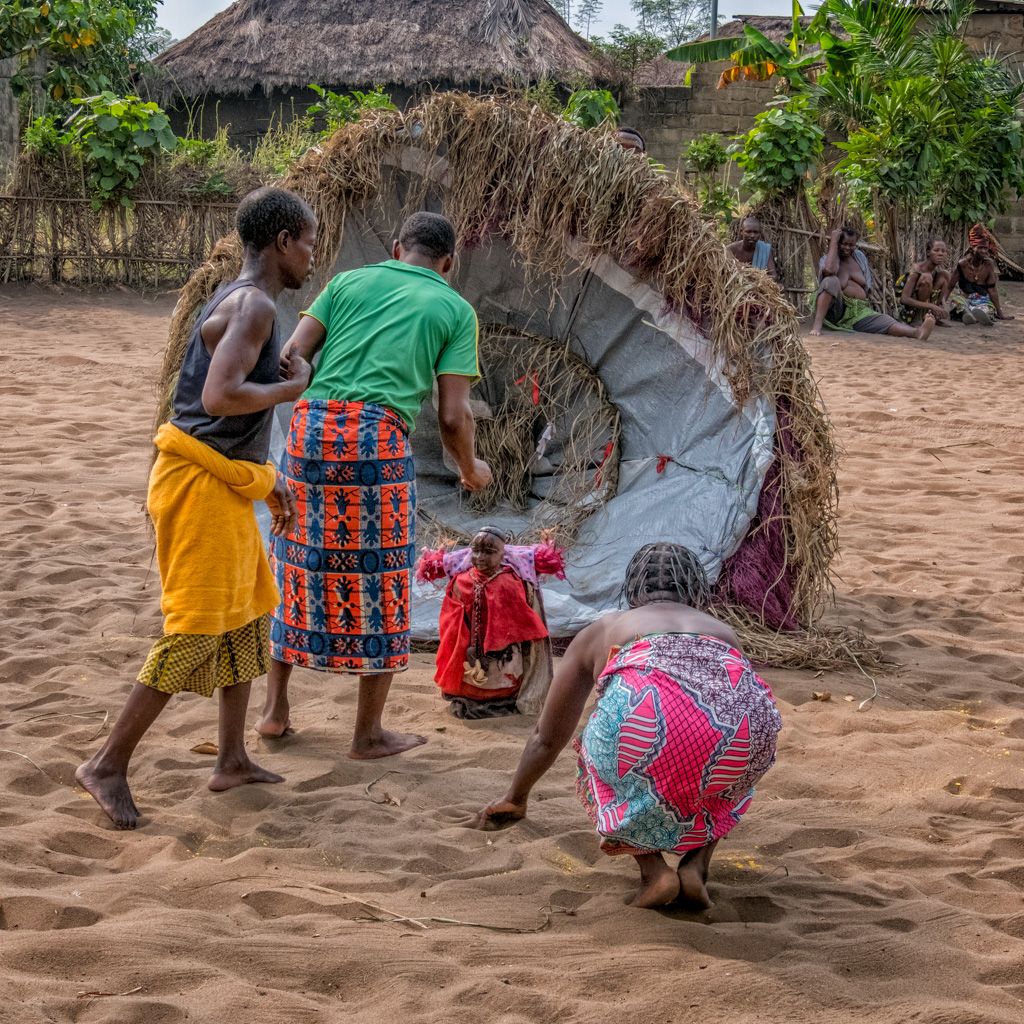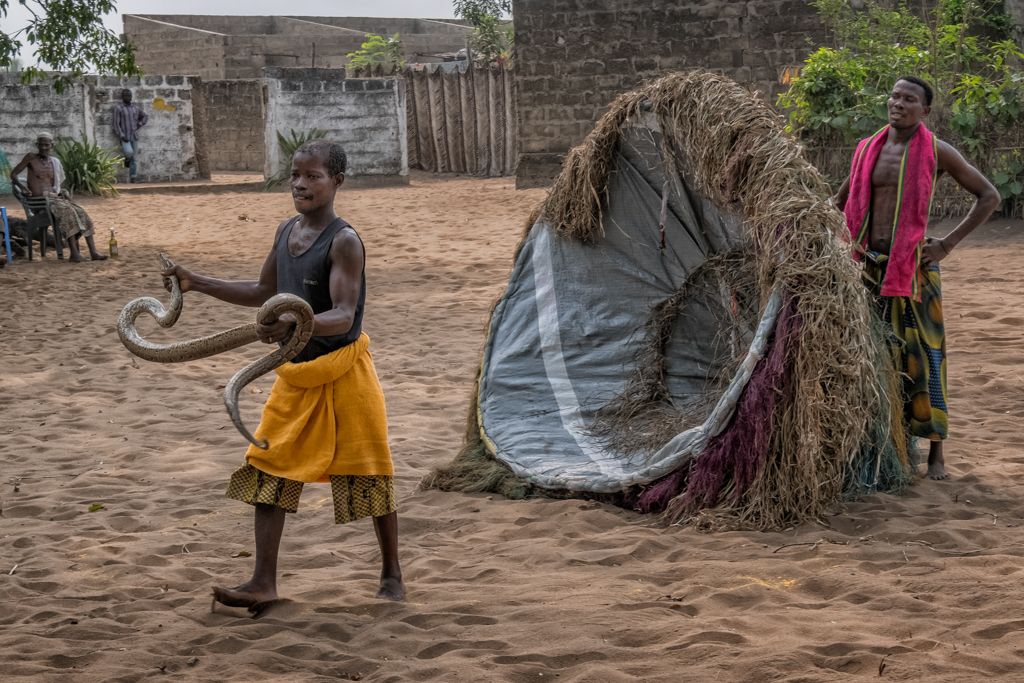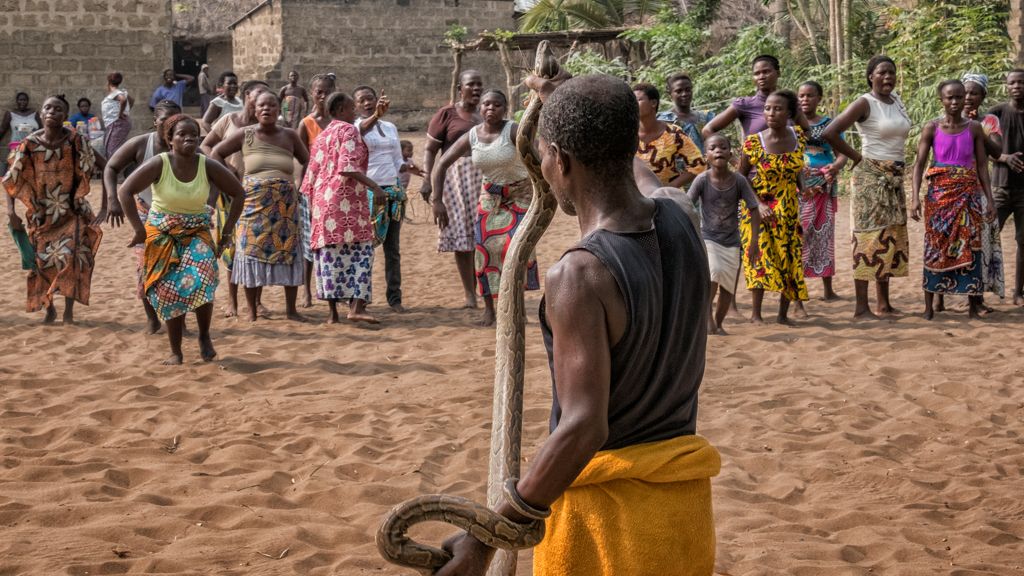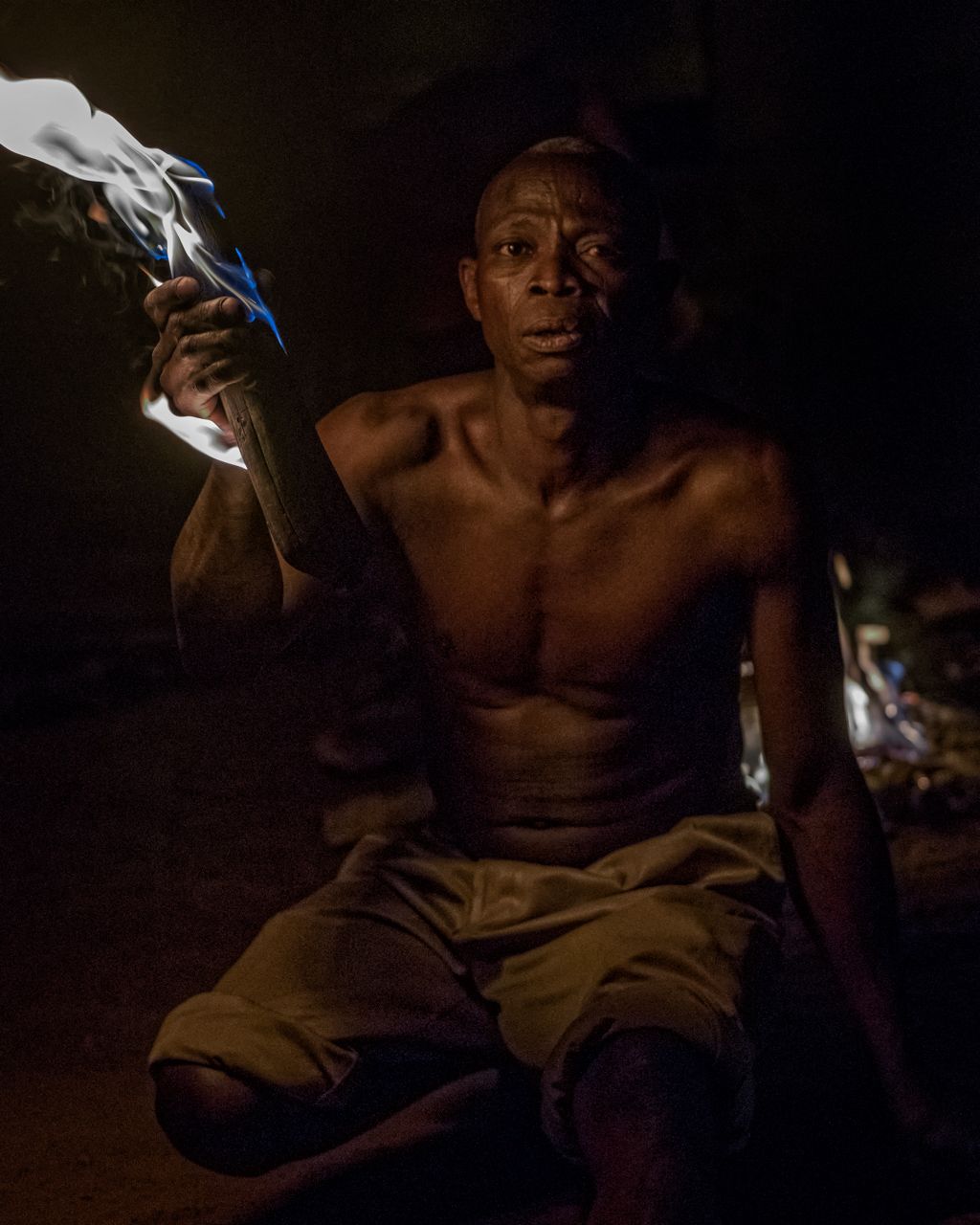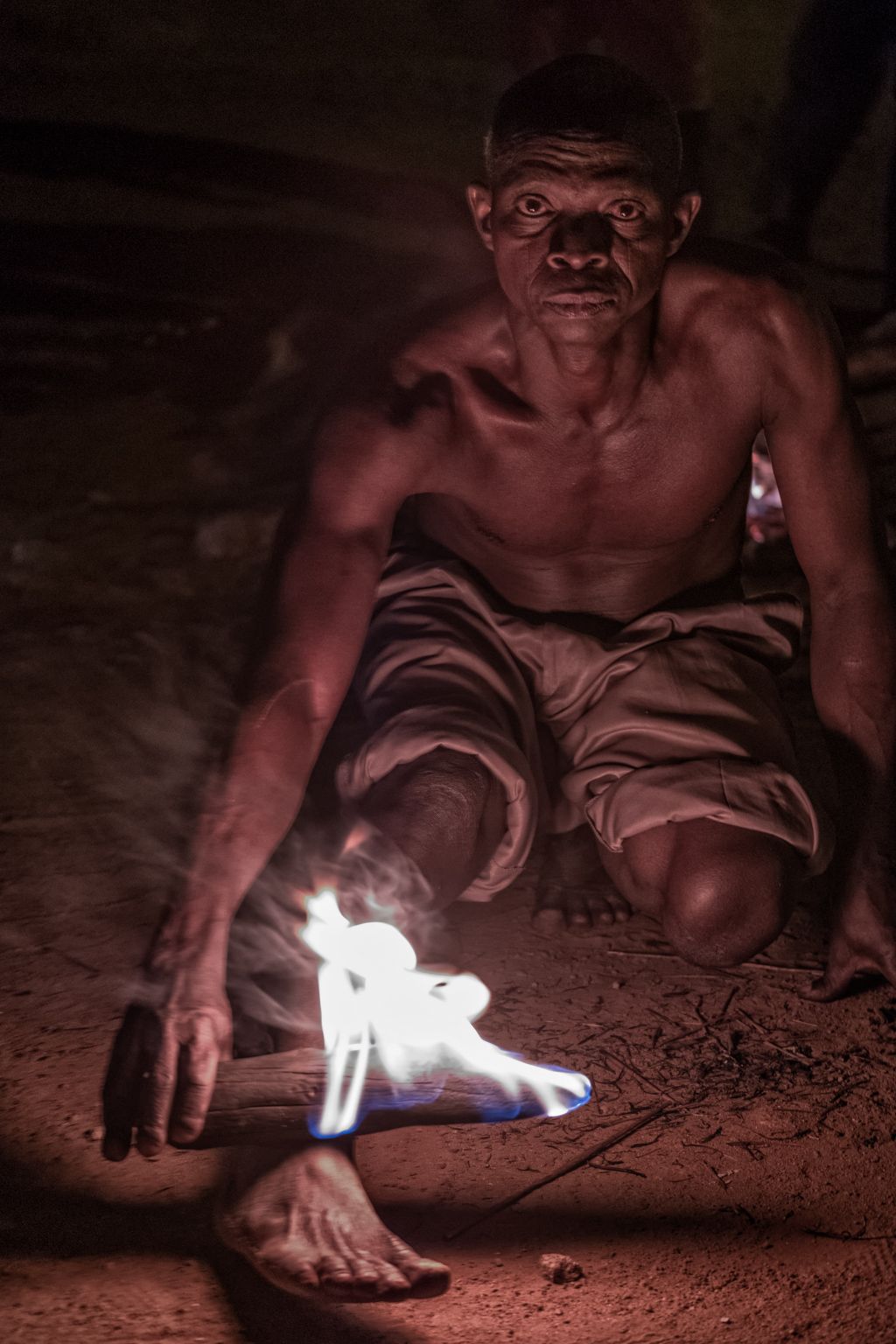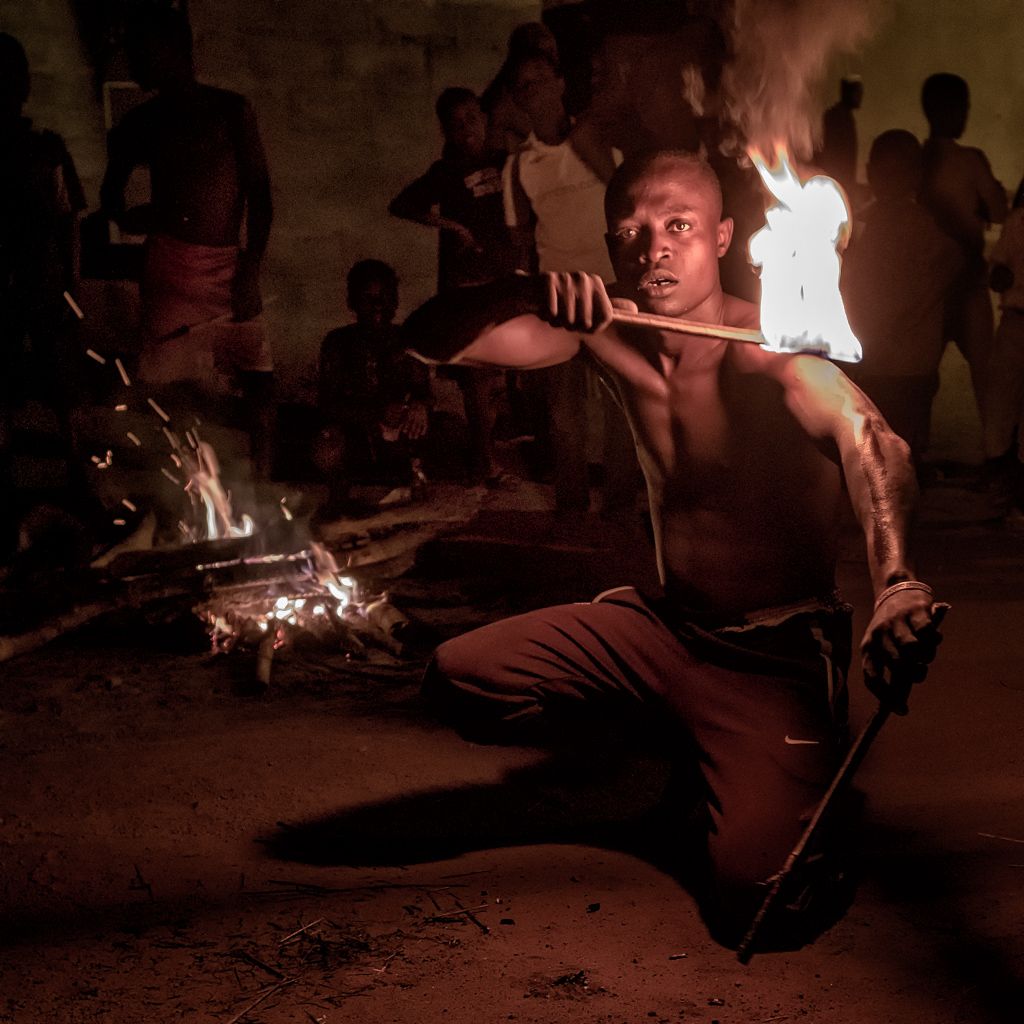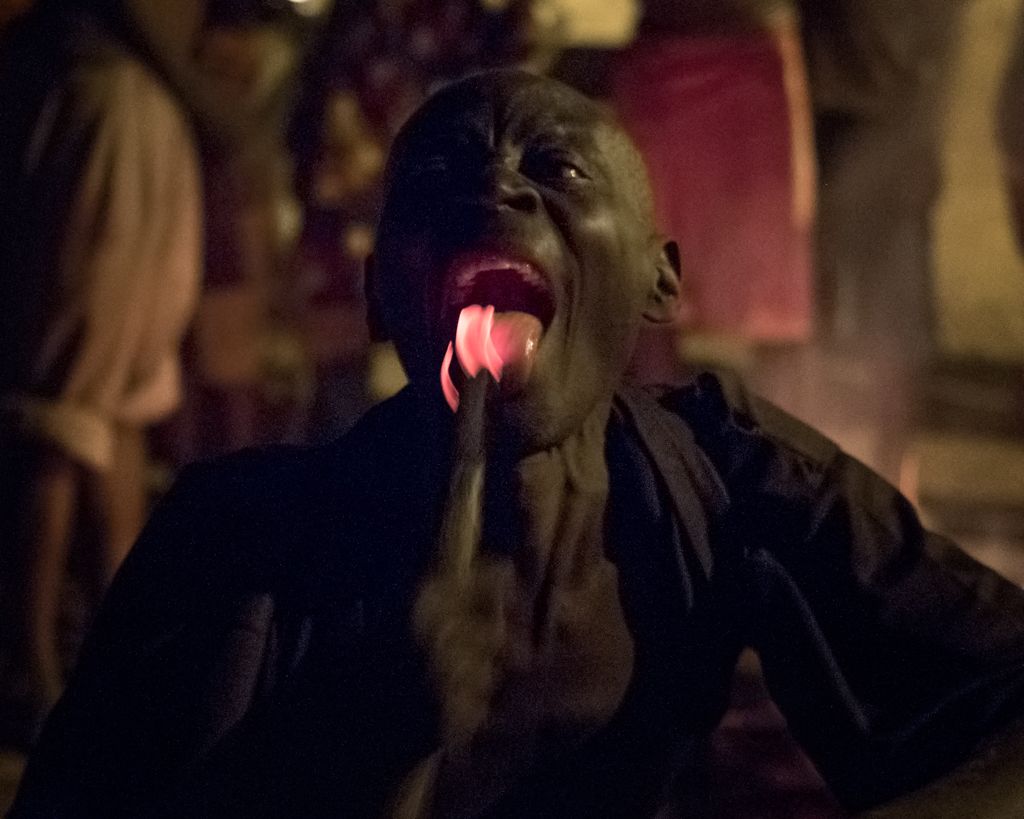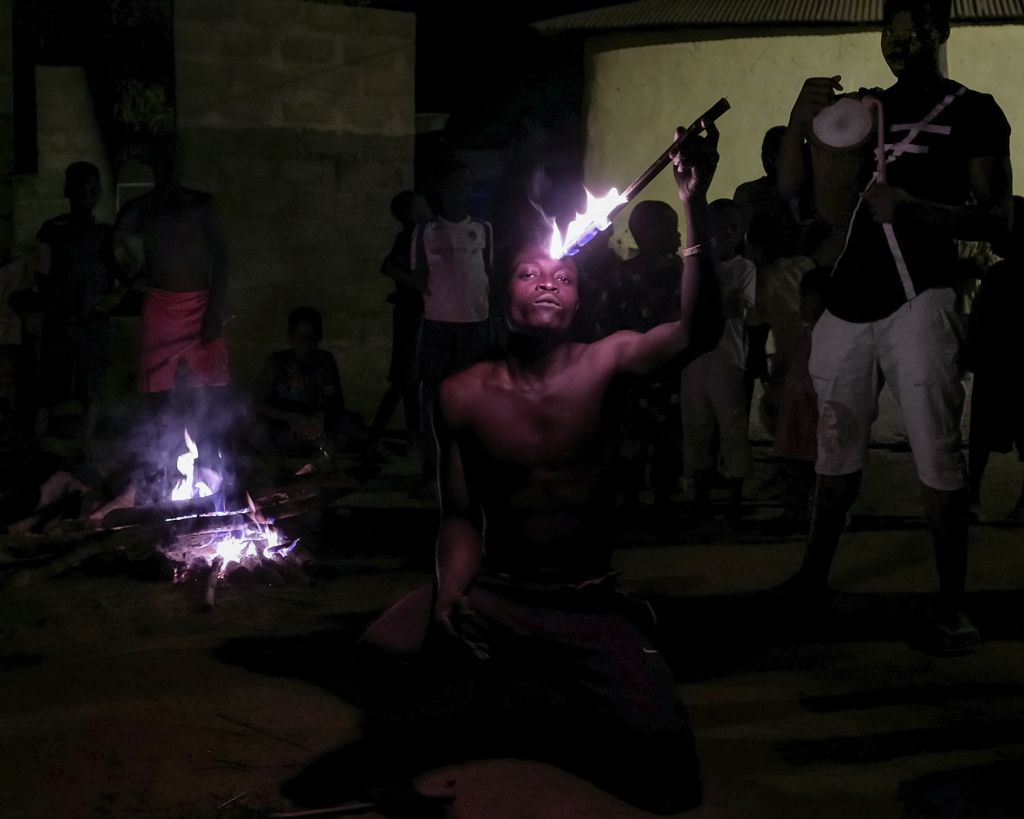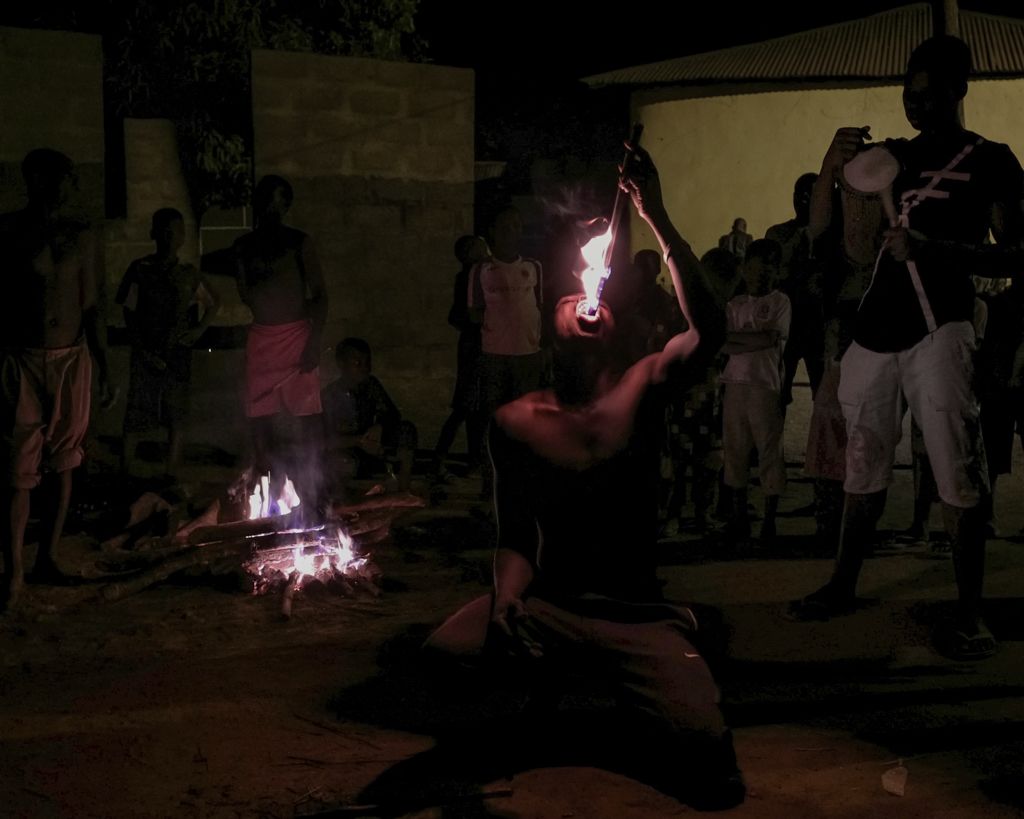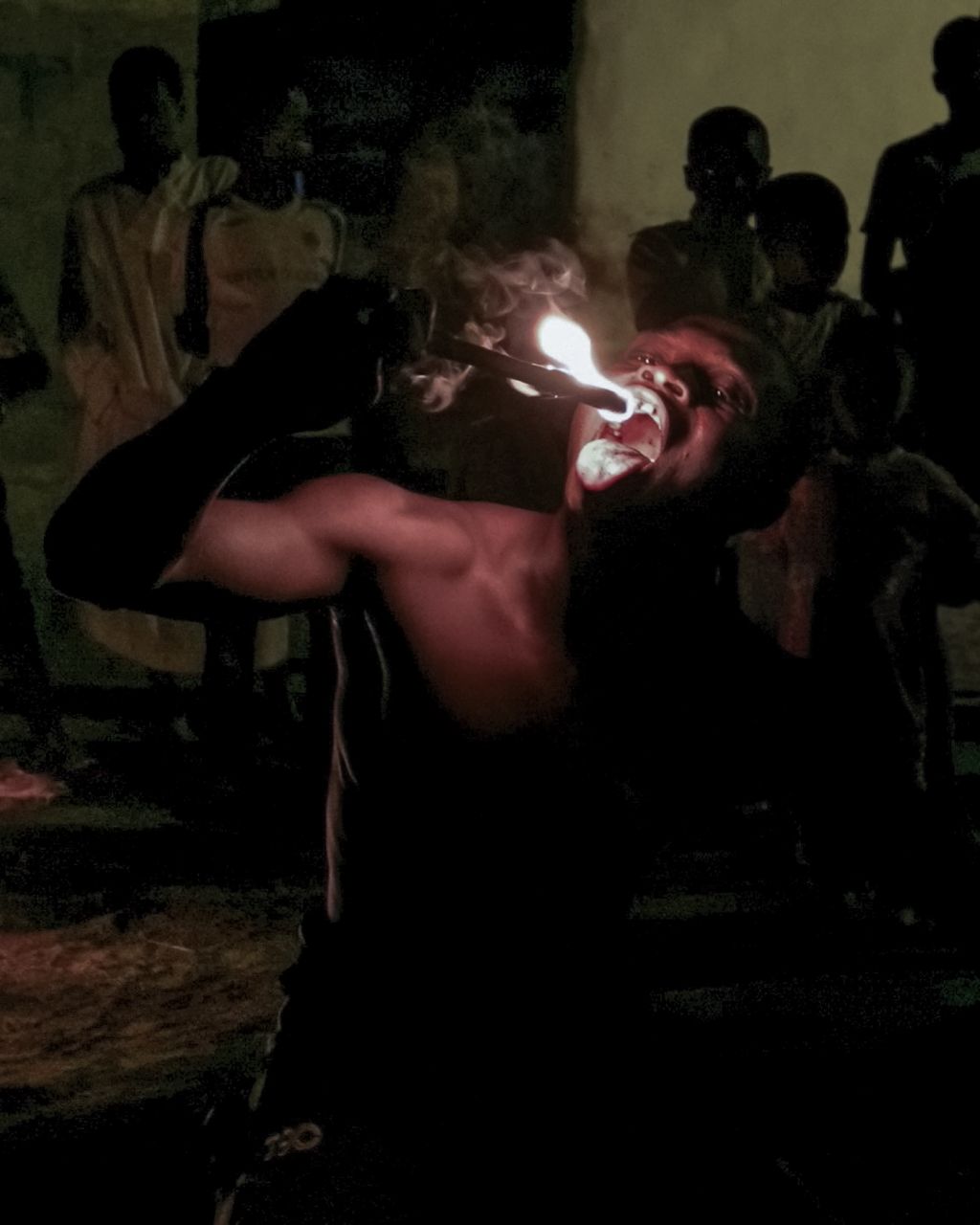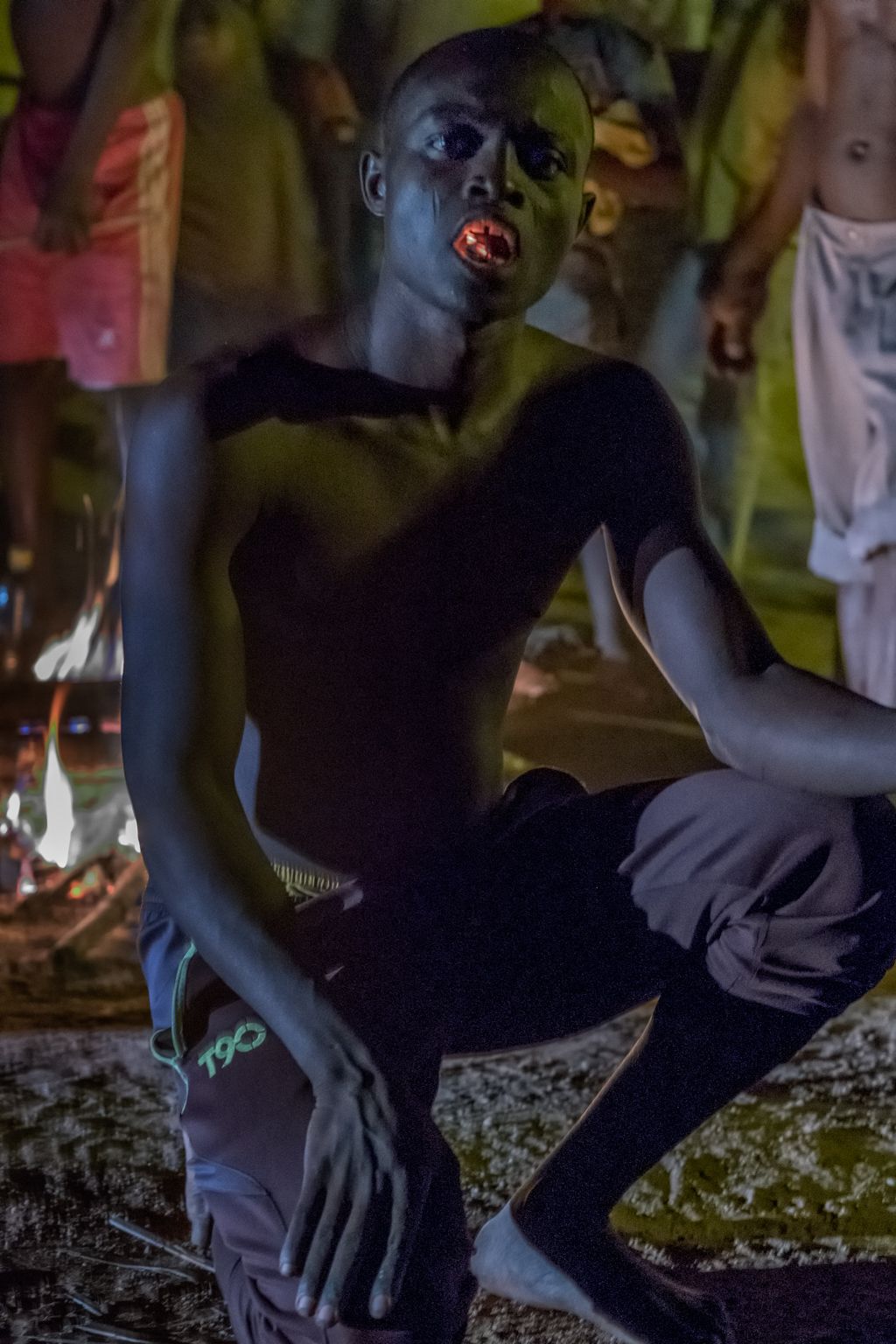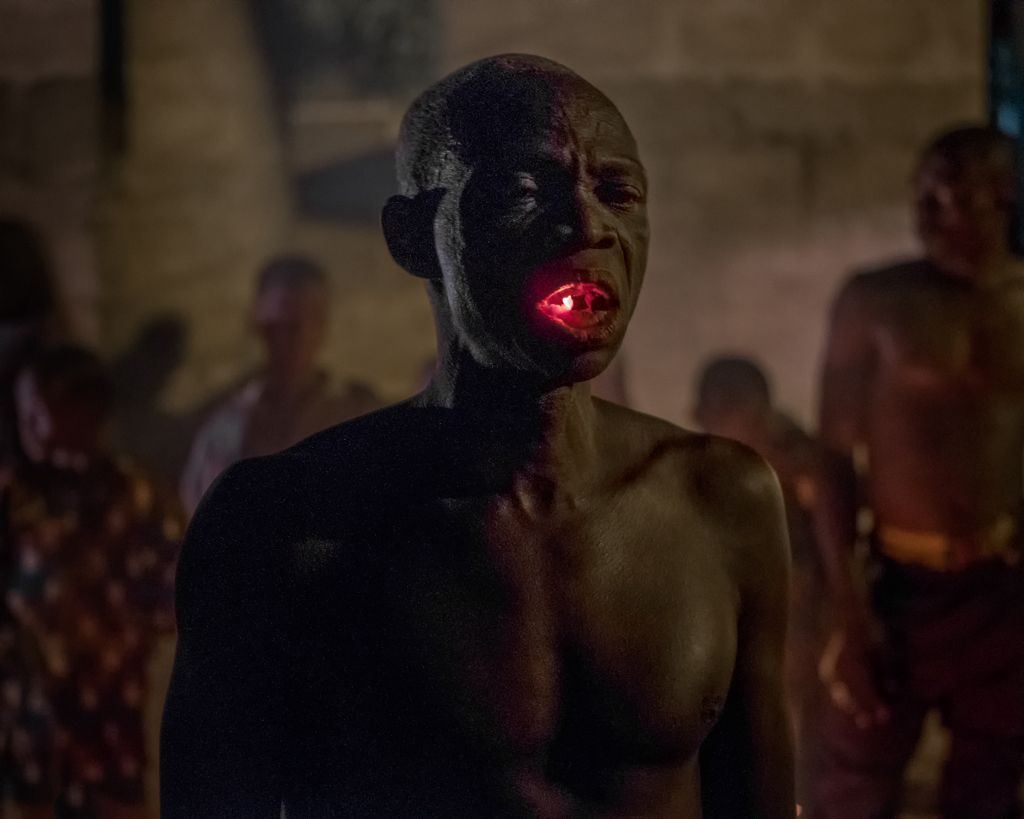TOGO, BENIN & GHANA: Spirits of Voudon II—Fetish, Fire & Sacrifice
Among the essential elements of the practice of Voudon are talismanic objects called fetishes that may be representational objects carved of wood, natural objects such as stones and shells, or the bones and dried parts of animals, birds and reptiles; these may be worn or carried for protection or healing and are employed by fetish priests in their rituals. Shrines are ubiquitous and the sites of blood sacrifice, primarily of chickens and goats. Integral to the religion is a holistic natural medicine, in which healers may employ both herbs and sacrifices to heal the ills of body and mind. This portfolio groups together several manifestation of the practice of Voudon as witnessed in south eastern Ghana and south and central Togo and Benin. First I present a small anthology of Voudon fetishes and shrines and the priests and healers who use them in their practice, including a few images at the infamous fetish market in Lome, Togo. Second is a sequence of ritual sacrifice at the Dankoli fetish, near Savalou in Benin. This is the most powerful Voudon site in the country and is a place of pilgrimage for believers throughout equatorial West Africa. The power of the fetish is manifested in the fact that no mediation by a priest is required: Simply communicate your wish directly to the spirits here, drive a stake into the sacred mound, make a libation of palm oil and you wish will be granted within a year. But then you must return to make a blood sacrifice of thanks and a further libation and retrieve your stake to conclude the transaction with the spirits. It is this return process that is documented here. Third is the Zangbeto, a large, animated and masked figure of colored grasses that is considered a protector of the village against thieves, witches, and other malevolent forces that threaten it, especially in the night. Among the Ewe and Fon people of southern Benin, each village has its protective Zangbetos; the performance documented here took place in Missihoun Kondzi. While villagers drum and dance, the secret society that maintains the Zangbetos leads one out into the open, where it begins to lurch, sway and spin in dancing or cleansing movements. Periodically, the attendants tip up the Zangbeto, magically revealing an object—a fetish figure, living plant, or even a boa—that confirms its supernatural power and animation by spirits. Fourth and last is a night fire dance performed by men of the Tem people of Central Togo, in the village of Kparatao, near Sokode. To the sound of intense drumming, the men dance themselves into trance and into the flames, running fire over their arms and legs and even putting glowing embers into their mouths, without apparent pain, and manifesting the powerful spirits who protect them.

